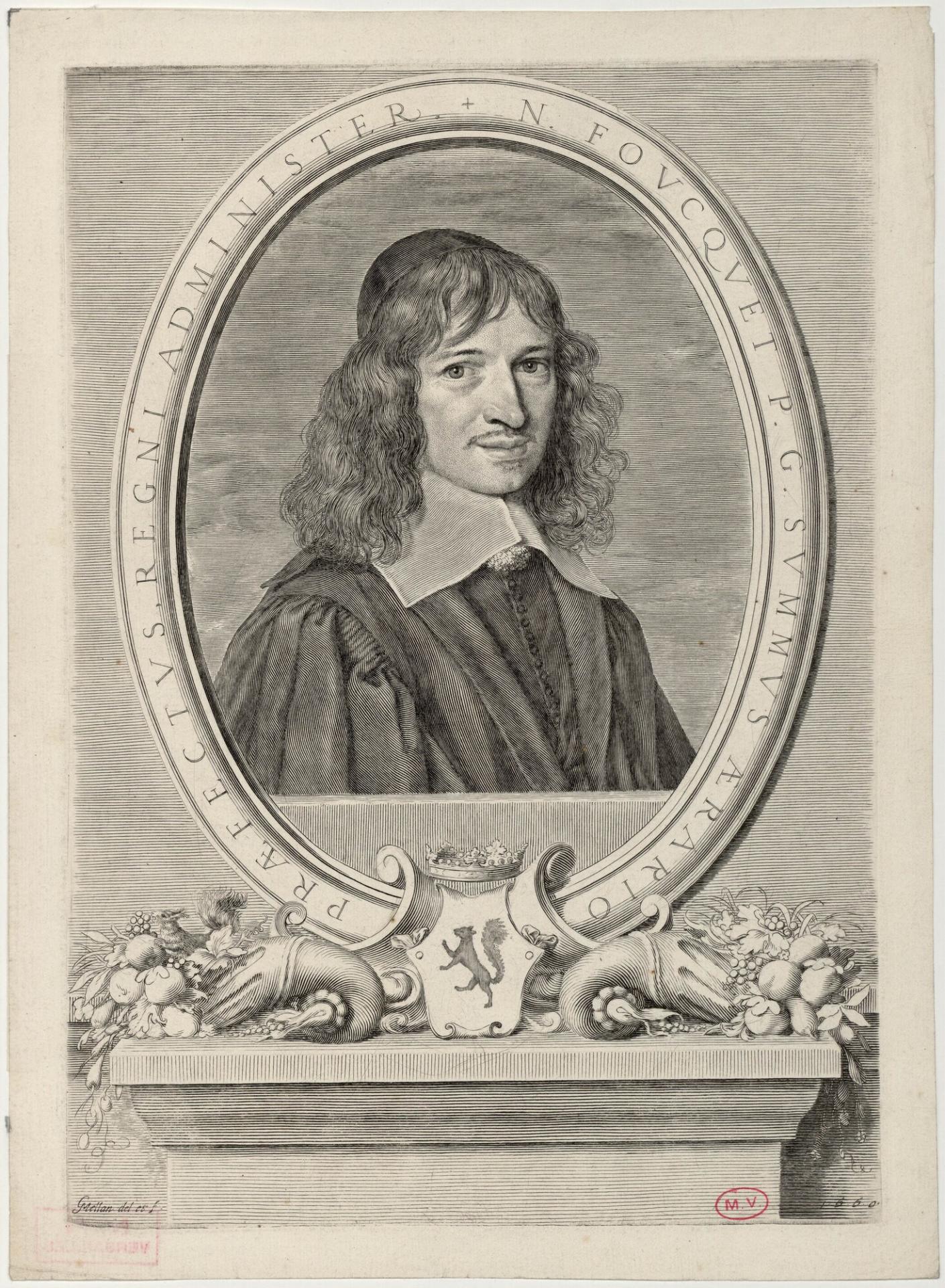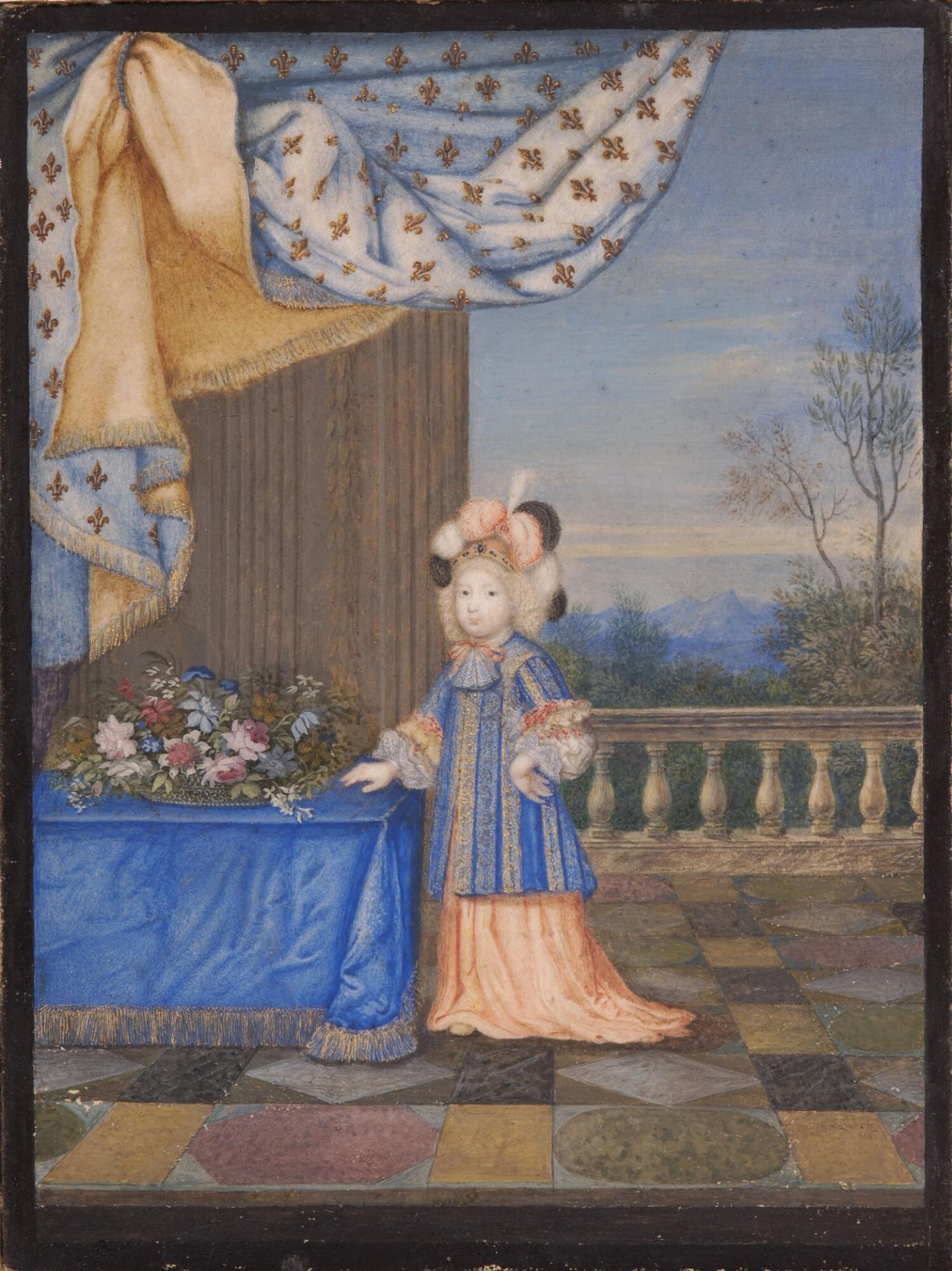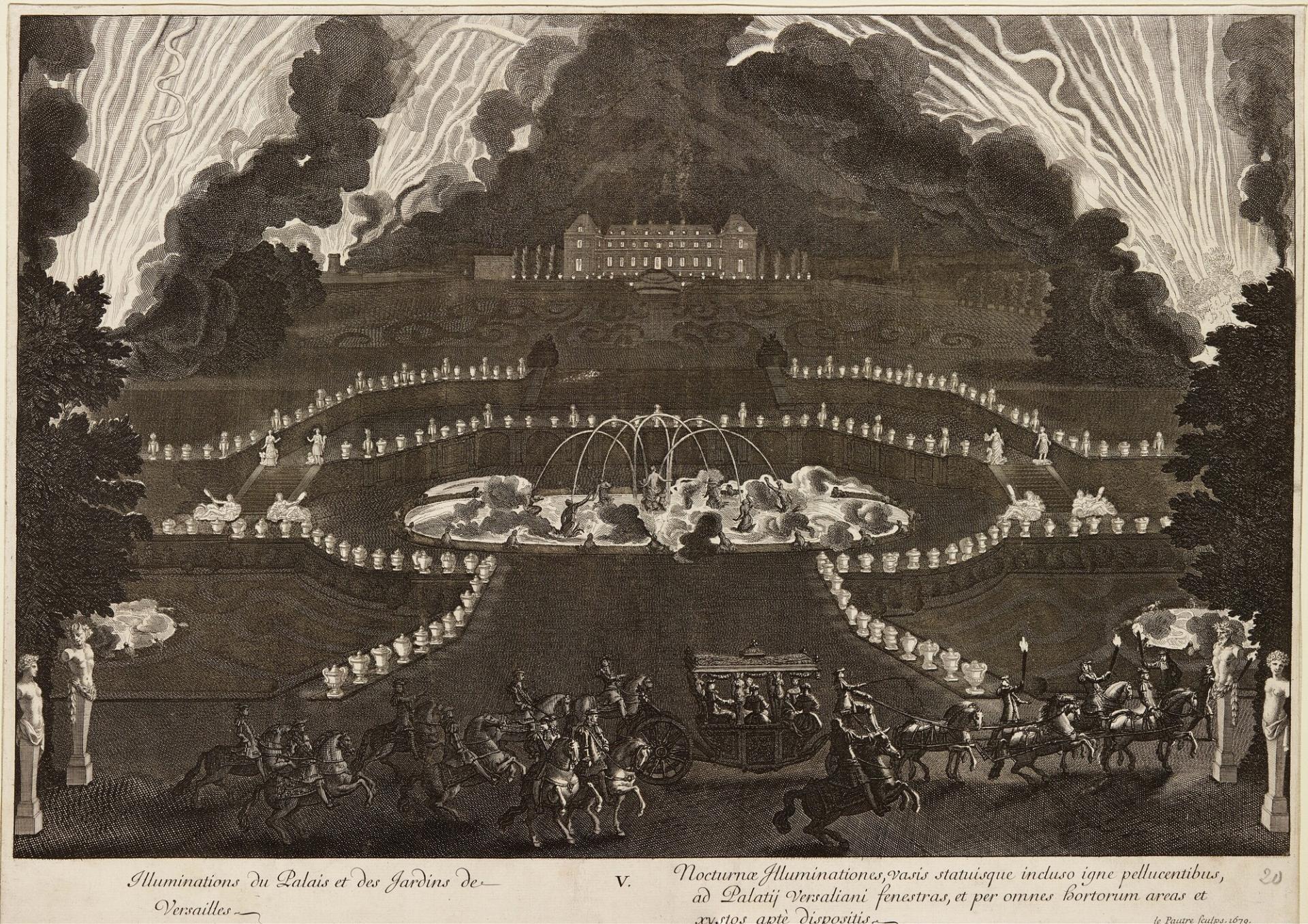
Jean de La Fontaine, by Hyacinthe Rigaud
© château de Versailles
Born in 1621, Jean de La Fontaine soon preferred literature to his work as Master of Water and Forests in Château-Thierry, his home town. After a number of publications (including a comedy, L’Eunuque, the subject of which was adapted from Terence) he met Nicolas Fouquet, the flamboyant Superintendent of Finances to Louis XIV, who granted him a pension. In gratitude, La Fontaine composed a long poem entitled Le Songe de Vaux which celebrated the beauties of the château and gardens that Fouquet had recently completed, but which were later to contribute to his downfall.

Nicolas Fouquet, by Claude Mellan
© château de Versailles
After the superintendent's arrest by order of the King, La Fontaine was one of the few to remain loyal to his unfortunate patron. The elegy entitled Aux Nymphes de Vaux, published in 1662, then the Ode au Roi written the following year, boldly called for clemency from Louis XIV, but in vain. Fouquet was initially sentenced to banishment from the kingdom, but had his sentence commuted by the king who ordered him to be imprisoned in the fortress of Pignerol. In 1664, La Fontaine served as gentleman-in-waiting to the dowager Duchess of Orléans until the latter’s death in 1672. He nevertheless remained distant from the court.

Marguerite de Lorraine, duchesse d'Orléans, by Schelte Adamszoon Bolswert
© château de Versailles
His first books of his Fables, after Aesop, were published in 1668 and dedicated to the Dauphin, aged seven at the time.

Louis of France, le Grand Dauphin, by Joseph Werner
© château de Versailles, dist. RMN / © Jean-Marc Manaï
They met with considerable success, a fact that was certainly not unrelated to the creation, four years later, of 39 fountains in the Maze Grove, each illustrating the subject of a fable and its moral through a composition of lead animals painted in natural colours. The second collection, dedicated to the Marquise of Montespan, was published in 1678. Publications of more fables were to follow, with some forty of them published in the author's lifetime alone. In 1747, Jean-Baptiste Oudry drew inspiration from them for his paintings for the apartment of the Dauphin, the son of Louis XV.
In 1669, La Fontaine published Les Amours de Psyché et de Cupidon, dedicated to one of his patrons, Marie-Anne Mancini, Duchess of Bouillon. This poetic work was also a pretext to celebrate the ongoing improvements being made by the king at Versailles and thus earn his favour. “Our monarch enjoys building palaces: this is worthy of a king” he wrote. Descriptions of the first Versailles are interwoven into the tale, evoking the Menagerie and the first Orangery by Le Vau, where Racine composed his Iphigénie in 1674. The Grotto of Tethys is written about in acute detail, with nothing escaping the notice of the walkers described by La Fontaine: the golden gates, the group of Apollo Being Served by the Nymphs, the other sculptures, the hydraulic organ…
Aware as they were of the roguish water fountains likely to spray visitors in front of the grotto and even inside, “the four friends did not want to get wet. They asked the one who was showing them the grotto to reserve this pleasure for the bourgeois or the Germans and to place them somewhere where they wouldn’t be sprayed with water”. La Fontaine may have attended, like hundreds of other curious people, the party held on 18 July 1668: “everyone heard of this party, of palaces turned into gardens and gardens into palaces”. He evoked the ephemeral constructions built at key points in the gardens and, more precisely, the feast room and the ball room which remained in place for some time after the party. Built of framework and foliage, they elicited such admiration that it was even considered rebuilding them permanently.

Feasts of 1668, fifth day: lighting of the palace and the gardens of Versailles
© château de Versailles, Dist. RMN / © Christophe Fouin
In 1684, La Fontaine was admitted to the Académie Française, a year after his friend Boileau.
At Versailles, he was one of the writers included in the monumental group of the Parnasse Français and also figured in a Sèvres biscuit porcelain in Louis XVI’s library belonging to the series of the Great Men of France and made after his statue by Pierre Julien, completed in 1785 (Musée du Louvre). He can also be found among the writers and artists represented around Louis XIV on a monumental Sèvres vase exhibited in the attic of the North Wing.





